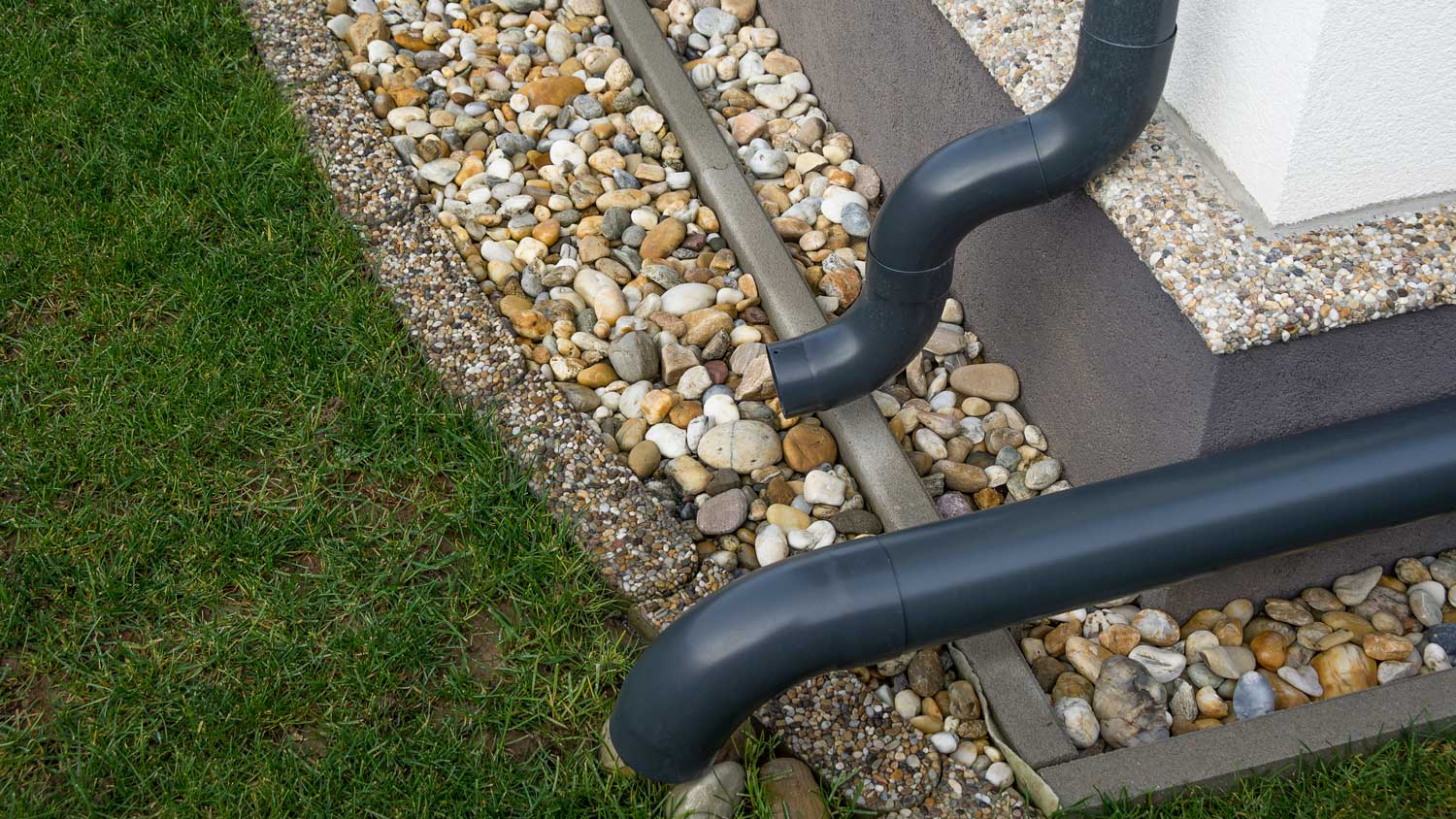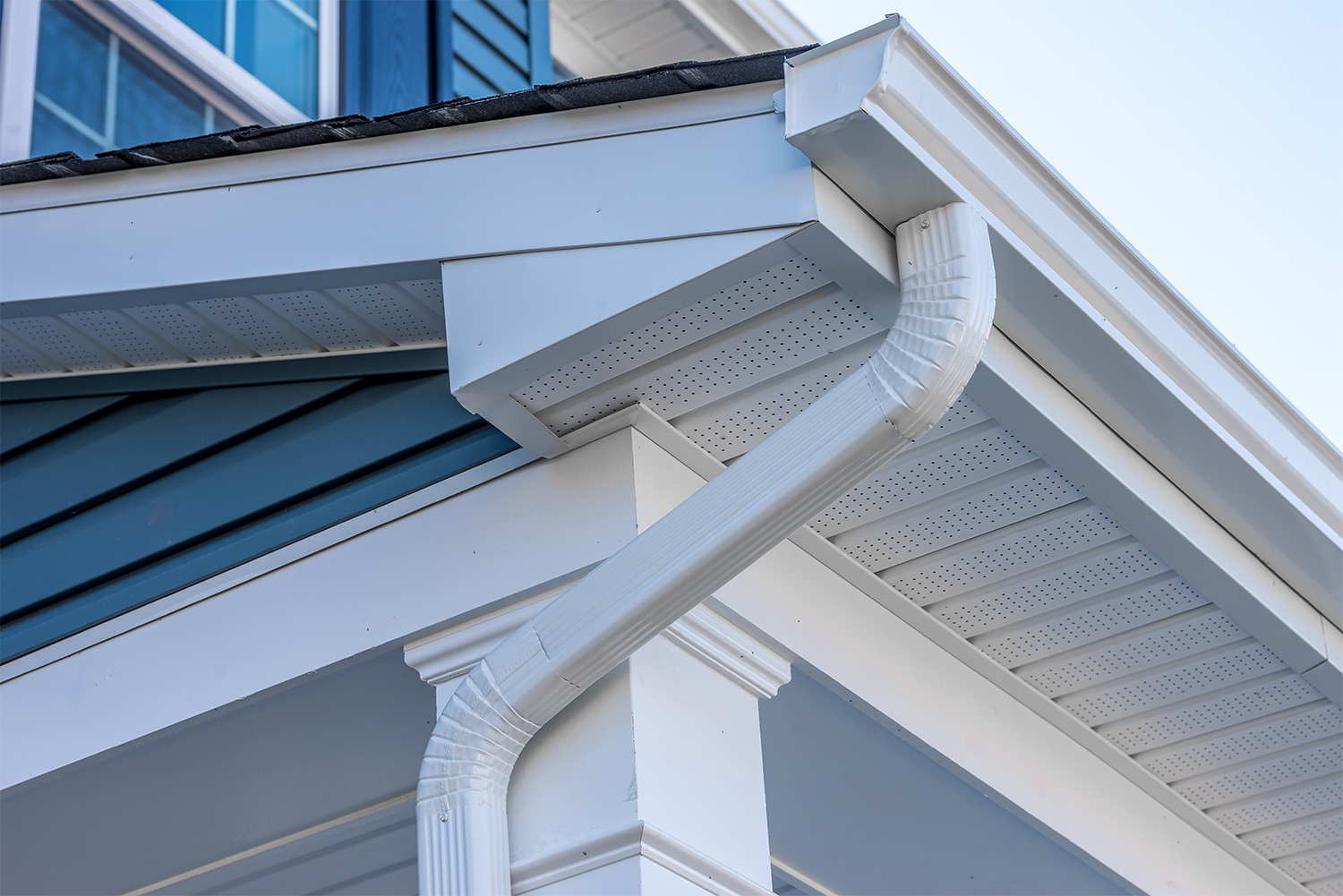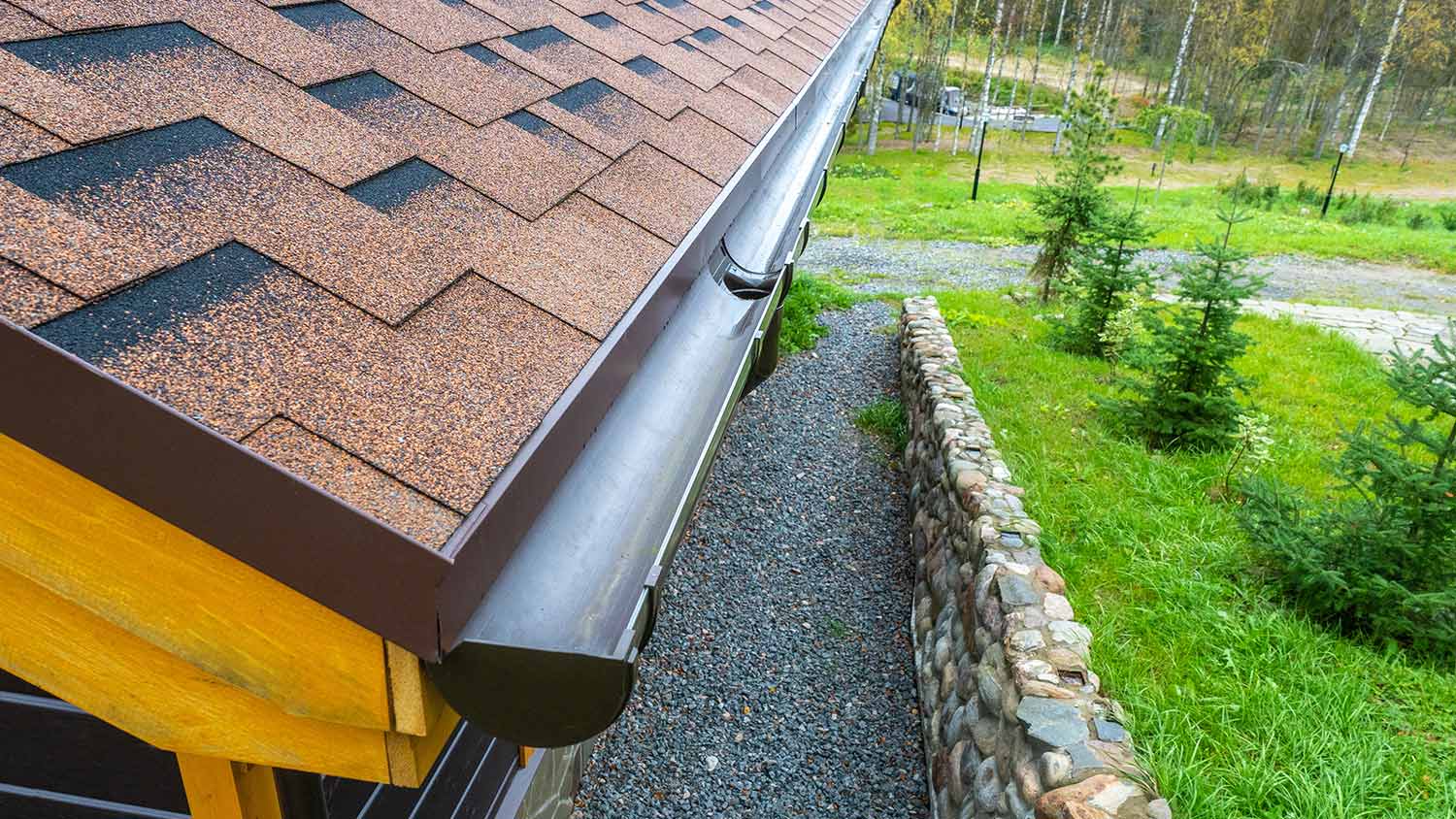
This guide will give you an idea of how much you can expect to pay when getting new seamless gutters installed when accounting for removal, labor, and different gutter materials.
Steer water away from your home with this DIY project


Gutters and downspouts work together to prevent water from wreaking havoc on your yard, home exterior, basement, and foundation, but this doesn't mean that your home is safe from water damage. Downspouts that don't carry water away from a sloped yard can cause the water to flow right against your home, damaging your property. One way to mitigate water damage from downspouts is by installing a gutter extension. Here's what you need to know to extend gutter downspouts and improve drainage around your home.

A gutter downspout extension project requires a little preparation. Consider the following prep work must-haves to get your project off the ground.
Before you extend your gutter downspouts, you'll first need to decide which type of gutter downspout extension will work best for your home. Below are some of the most common gutter downspout extension types to help you make your choice:
Aluminum gutter downspout extensions: These extensions are popular due to their affordability and ease of installation. The only downsides to aluminum downspout extensions are how they can detract from your curb appeal and how difficult it can be to maneuver a lawn mower around them.
Underground downspout extensions: Underground or buried drain pipes require more elbow grease, but they're more effective at diverting water from your home without detracting from your curb appeal or hindering your yard work every time you take out the lawn mower.
Splash blocks: An easy way to redirect water from flowing toward your home is by placing a splash block underneath your downspout. These rectangular, long channels extend the range of your downspout so that water steers clear from your house.
Rain barrels: Though technically not a gutter downspout extension, rain barrels also serve a similar purpose to your typical downspout extensions— only they give you an eco-friendly method for collecting rainwater and using it during those hot summer droughts.
For this tutorial, we'll focus on how to install an underground downspout extension. This method is one of the most foolproof ways to keep water away from your home.
Every home is different, so just how far away from your house you need to extend your gutter downspout will depend on your circumstances. You'll want a PVC pipe that's at least eight feet away from your home for the best results, but ideally 10 feet or more. For very sloped homes, then you might want an even longer pipe to ensure that water doesn't flow back toward your house.
Similarly, you'll want to consider other obstacles that might prevent your extension from working. Tree roots, trees, shrubs, boulders, and even concrete pavement can get in the way of extending your gutters' downspouts—especially if you’re installing extensions on several downspouts.
While shopping for a downspout extension, you'll want to make sure that you choose one that actually fits your gutter downspouts. The most common gutter downspout extensions are 3 by 4 inches or 3 by 4 inches, but measure your gutter downspouts to be certain.
Knowing exactly how your piping will fit is essential to having a smooth project. Lay your PVC pipe next to your downspout to identify where your trench line ends. You can use any kind of identifying marker to help you know exactly where to stop digging, such as a stake. If you are installing multiple gutter downspout extensions, repeat this step for each downspout.
Once you've identified the trench lines, then it's time to start digging. Use a shovel if possible. The quality of your soil—and what's in your soil—can really impact how much manual labor you'll need to put into this project. Compact, rocky soil with thick roots can be nearly impossible to dig through. If you find that you can't dig into the soil by hand, then you may need to rent a trencher or call in a professional for help.
Make sure that you dig at least 10 inches into the ground, maintaining a slight slope away from your home to keep water from flowing toward the foundation.
Keep in mind that cold weather can cause your piping to become clogged with ice. If you want to avoid clogs from frozen pipes, then you'll need to dig a trench at least 32 inches deep. Some regions have an even lower frost line and require you to dig 48 inches or deeper into the ground to avoid freezes.
In most cases, you won't have to dig a trench below the frost line, but if the pipe drains into an existing drain line or a dry well, then you may need to dig that deep.
Dig a trench for every gutter downspout extension and an additional trench that runs perpendicularly across the end of the trenches for multiple downspout extensions before moving on to the next step.
The downspout adapter allows for the PVC piping and downspout to connect together. Press the downspout adapter into the reducer coupling, then connect the now connected downspout adapter and reducer to the downspout, making sure that it fits securely together.
Now that you have the adapter on the downspout and the reducer coupling connected to the downspout adapter, you can measure how much piping you'll need to connect the coupling to the starter elbow.
With your measuring tape in hand, hold the elbow below the coupling. The elbow should lay in the trench exactly as you plan on installing it for the most accurate measurements. Then, measure the space between the end of the coupling and the end of the elbow to get the measurement for the piping material.
With protective eyewear on, use a handsaw or miter saw to cut the PVC piping to the measurement you wrote down in the last step.
Next, you'll need to use purple PVC primer and PVC cement to glue your two PVC pipes together. Apply the PVC primer to the ends of both the elbow and the PVC pipe that’s connected to the downspout. Then, put PVC cement on top of the primer and quickly press the pipe firmly against the elbow.
Turn the two pieces ever so slightly, and then hold the pipes in place for a couple of seconds until the cement cures.
The next part of the piping installation is to connect your long PVC piping to the open end of the elbow. Unlike the previous step, where you'll need to primer and cement, your PVC piping should fit into the elbow. It's still a good idea to seal the connection with the PVC cement to ensure there's no leaking.
If you're installing extensions on multiple downspouts, then you'll want to repeat these steps for every downspout.
The next step for multiple downspouts is to connect the ends together to form one long channel for running water to flow down and away from the home. Install sanitary tees, also called T-fittings, at the ends of the pipes by applying PVC primer and PVC cement to the ends and pressing them together as you did when you installed the starter elbow.
Make sure that the T-fittings flow downstream. Then, connect the T-fittings by gluing piping from one end of the T-fitting to the next one.
At the end of your trench, be it the end of a series of multiple trenches or just one downspout extension, you'll want to dig a hole for the water to pool. The hole should be about a foot in diameter for a single downspout extension or 3 feet in diameter for a series of trenches. Aim for a depth of around a foot and a half.
Place about 4 inches worth of gravel at the bottom of the hole.
Your last step is to bury the gutter downspouts in your yard. Use a rake or a garden hoe to fill the trenches back up with the dirt that you had previously removed from the ground.
Installing gutter downspout extensions is an easy project—in theory. In practice, however, installing the extensions is a very labor-intensive and time-consuming project. Not to mention, failure to create a slope can cause the water to drain back toward your home.
While you can DIY a gutter downspout extension, it's far easier to simply hire a local gutter installer to do the job. A gutter pro can also determine if it’s best to install new gutters rather than install extensions on old ones.
Finding the right pro to do the job will make all the difference. Here are a couple of important questions to use for contractor screening while you’re researching and to ask once the contractor is on site:
Are you licensed and insured?
What types of gutters do you offer?
Do you offer any warranties?
How do you know what gutter sizes I need?
How long will the process take?
Can you provide references for a past project that’s similar to mine?
How much do you charge? Do you charge by project or by the hours?
Do you charge an upfront fee for coming to inspect the scope?
Do you offer financing?
From average costs to expert advice, get all the answers you need to get your job done.

This guide will give you an idea of how much you can expect to pay when getting new seamless gutters installed when accounting for removal, labor, and different gutter materials.

Gutter repair costs may not be as high as you think—but it depends on the type of damage you're addressing. Learn why you need to hire a gutter pro for this work.

Installing copper gutters adds beauty and value to your home. The cost of your project will depend on the size of your home, the size of your gutters, and the thickness of the material.

Wondering how much gutter installation costs? We’ll break down prices by material, gutter type, and other factors impacting overall gutter costs in Washington, DC.

Ensuring your gutter is properly installed will protect your home from water overflow. Learn how far your gutter should be from the roof edge and the facia board.

Wondering how much gutter installation costs? We’ll break down prices by material, gutter type, and other factors impacting overall gutter costs in St. Louis, MO.